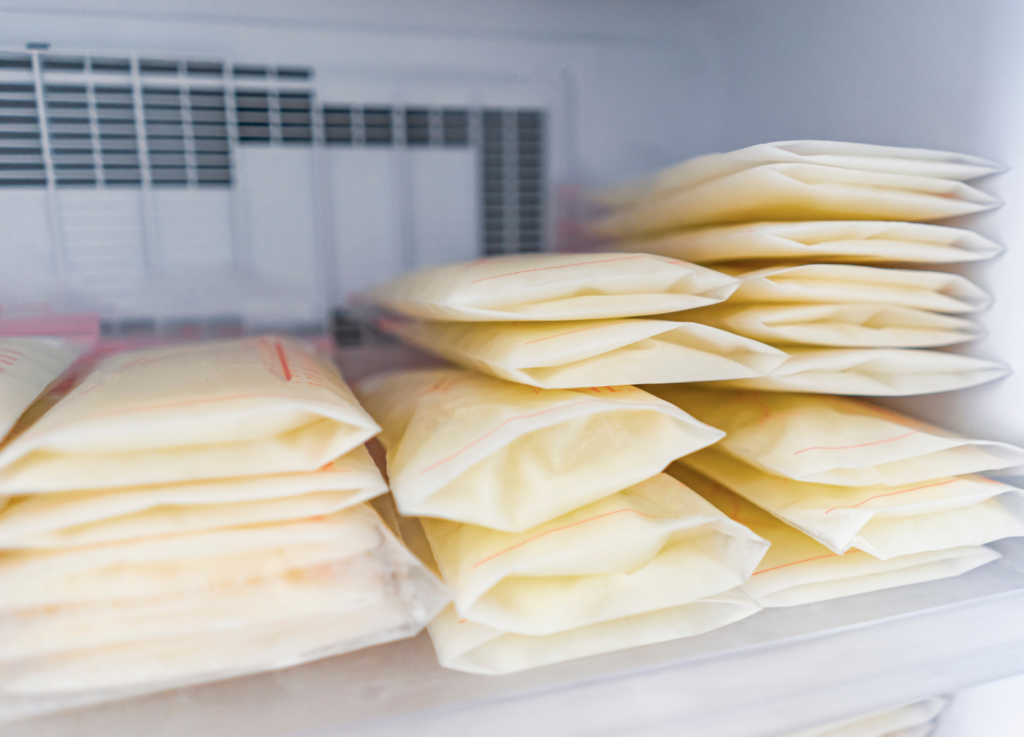Power Outages And Frozen Breast Milk- How To Prepare
December 19, 2021 2024-06-20 17:08Power Outages And Frozen Breast Milk- How To Prepare
Power Outages and Frozen Breast Milk

“I have no power…what if my breast milk defrosts?”
Preventing your milk from defrosting:
1) Keep that freezer door shut! Don’t open it unless you absolutely have to. According to the FDA, a full freezer will hold its temperature for up to 48 hours if the door remains closed (up to 24 hours if it’s half full). Best practice is always to keep your milk in the back of the freezer where it is the coldest. This will help it stay maximally cold in general, and frozen longer in an outage. If your freezer isn’t full, you can always fill it with ice packs, containers of water, or in a pinch…even snow!
2) Ask for help. if it’s safe, you can ask a friend, family member, neighbor for help. Even the neighborhood corner store may be able to keep your milk frozen until your power is restored.
3) Use a generator. If possible, purchase a generator to buy you some time in the event of an outage. A portable generator can be used to run large appliances temporarily. Most homeowners will use a generator somewhere between 3000 and 6500 watt capacity. A large refrigerator/freezer uses about 780 watts, so if you aren’t planning to run anything else off of it, you can get by with a smaller generator and lessen the expense. If you live in an area prone to outages, or if you regularly experience prolonged outages, you may consider investing in a whole-house generator instead. Contact a local electrician to discuss your options!
4) Use a cooler. If you have a cooler, pack it as full as possible, insulating any air space with ice packs or crumpled paper, or snow if you have it. The less open space, the colder it will stay. Wrap the cooler in blankets for added insulation.
5) Bury it in the snow! This should be an absolute last resort, but if your temperatures are consistently below freezing, you can bury your milk under the snow. The key here is to keep it covered, completely out of the sun (even if temps are low, direct sun can thaw it), and sealed tightly (double ziploc freezer bags at least) to prevent leakage and keep animals from finding it. **This practice is NOT recommended by the FDA, due to variables like inconsistent temperatures, sanitation, and animal concerns. It should only be used if all other methods fail or are unavailable.**
When the power comes back:
Once power is restored and you can survey the situation, inspect your milk. You may have heard that if it still contains ice crystals, you can refreeze it. But first, there are a couple things to consider before refreezing:
- How sanitary were the conditions under which it was originally pumped?
Be honest with yourself! Did you wash your hands before pumping? Did anyone else handle the pump parts or bags? Did you set the pieces on a counter that wasn’t sanitized first? While these things may not seem like a big deal at the time, the more bacteria present in your milk when it was pumped, the faster they will reproduce when it’s thawed.
- How long has the milk been frozen? Was it in a deep freeze or regular freezer? In the front or back? Again, bacteria reproduction is the concern here. Freezing does not stop bacterial growth, it just slows it down. The lower the temperature the slower it happens.
The CDC says that you can refreeze thawed milk if it contains ice crystals. However, given the factors mentioned above, if you have any concerns you can always strain the ice crystals and refreeze those, and use the thawed milk according to these milk storage guidelines (LINK). Or label it “undrinkable” and refreeze for milk baths later.
Please don’t just dump your milk! It still has wonderful soothing properties for the skin.
Search
baby bottle feeding breastfeeding breastfeeding latch breastfeeding pain breast milk storage breast refusal bugs cedar park regional clogged duct contraceptives daycare discharge doula engorgement exercise foremilk galactogogues hindmilk hospital how to latch baby labor low milk supply low supply massage mastitis newborn care nursing strike nutrition pacifiers plugged duct plugged ducts postpartum prenatal pumping relactation siblings sleep sore nipples breastfeeding suck training tax breaks thrush tongue tie video weaning
Search



